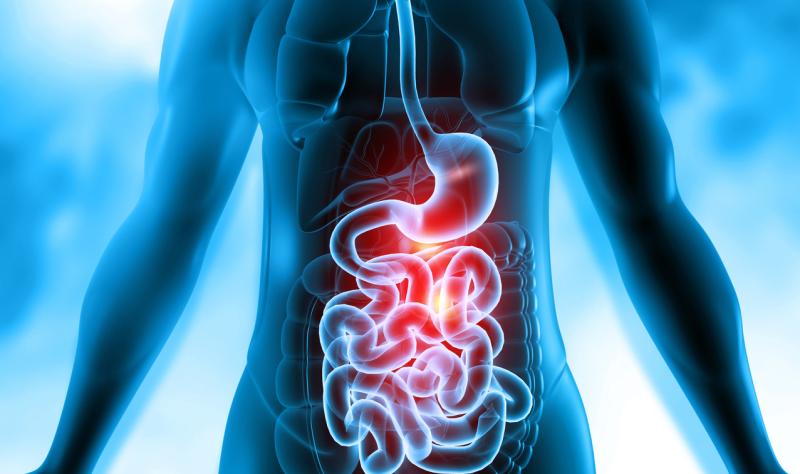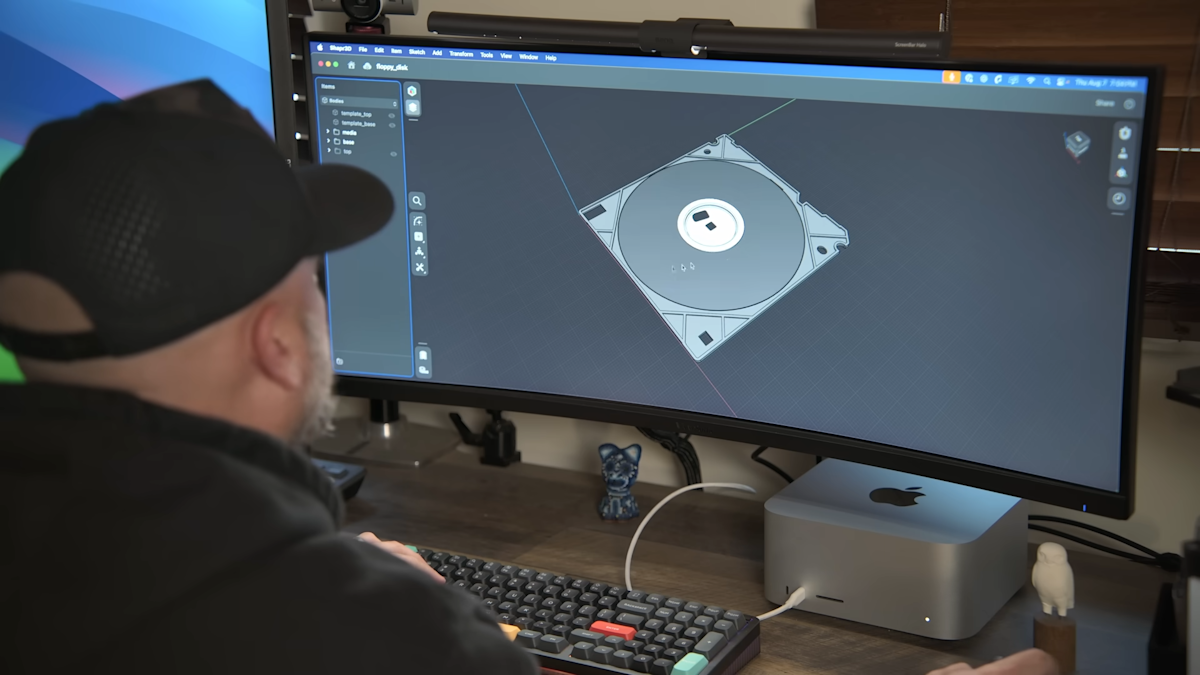- Stellar jet pressures planet-forming disk Astronomy Magazine
- Baby star fires an explosive jet that crashed back into its own planetary disk Earth.com
- Newborn Star’s Jet Ignites a Cosmic Blast. Then Gets Slammed by Its Shockwave SciTechDaily
- A Stellar Explosion Backfires On A Baby Star Universe Today
- Baby star sets off explosion, gets caught in blast Phys.org
Blog
-
Stellar jet pressures planet-forming disk – Astronomy Magazine
-

Ireland announce squad for Women’s RWC 2025
Ireland have named their squad of 32 – comprising 18 forwards and 14 backs – to compete at Women’s Rugby World Cup 2025, which gets underway in England on 22 August.
The squad will be co-captained by Edel McMahon (pictured) and Sam Monaghan and features just one uncapped player, hooker Beth Buttimer, who impressed in the recent Under 20 Summer Series.
Ivana Kiripati, Nancy McGillivray and Ellena Perry all first received caps in the recent warm-up matches and also make the final squad.
‘Green Wave’
“When we qualified for the Rugby World Cup in April 2024, we knew it gave us a solid amount of time to prepare for the tournament. We have used that time to build depth and cultivate our ‘Green Wave’,” said head coach Scott Bemand, who is assisted by Alex Codling, Denis Fogarty, Larissa Muldoon, James Scaysbrook and Gareth Steenson.
“The majority of this squad have now been together since the start of June, and we are excited to finally get going,” he added.
“Missing out on the last World Cup lit a fire in all of us,” said co-captain McMahon. “Getting Ireland back on the world stage means absolutely everything, it’s something we have dreamed of and fought for ever since. We’re ready, and we are going to give it everything for our country.
“The ‘Green Wave’ is more than just a slogan for us—it’s the spirit we carry onto the field. Over the coming weeks, we want to make our families proud and inspire the nation. This is a moment we’ve worked tirelessly for, and we’ll leave nothing behind.”
Ireland get their tournament underway against Japan in Northampton on Sunday, 24 August and play further Pool C matches against Spain, also at Franklin’s Gardens, on 31 August, and seven-time champions New Zealand in Brighton on 7 September.
Ireland squad
Forwards
Claire Boles (Railway Union RFC / Ulster) (6)
Beth Buttimer (UL Bohemian / Munster)*
Ruth Campbell (Old Belvedere RFC / Leinster) (8)
Eimear Corri Fallon (Blackrock RFC / Leinster) (6)
Linda Djougang (Old Belvedere RFC / Leinster) (48)
Brittany Hogan (Old Belvedere RFC / Ulster) (34)
Neve Jones (Gloucester Hartpury) (37)
Ivana Kiripati (Creggs RFC / Connacht) (2)
Siobhán McCarthy (Railway Union RFC / Munster) (9)
Sadhbh McGrath (Cooke RFC / Ulster) (16)
Edel McMahon (Exeter Chiefs / Connacht) (34) Co-Captain
Clíodhna Moloney MacDonald (Exeter Chiefs) (45)
Sam Monaghan (Gloucester Hartpury / IQ Rugby) (23) Co-Captain
Grace Moore (Trailfinders Women / IQ Rugby) (22)
Niamh O’Dowd (Old Belvedere RFC / Leinster) (17)
Ellena Perry (Gloucester Hartpury / IQ Rugby) (1)
Fiona Tuite (Old Belvedere RFC / Ulster) (17)
Aoife Wafer (Blackrock College RFC / Leinster) (15)Backs
Enya Breen (Blackrock College RFC / Munster) (31)
Amee Leigh Costigan (Railway Union RFC / Munster) (19)
Aoife Dalton (Old Belvedere RFC / Leinster) (24)
Méabh Deely (Blackrock College RFC / Connacht) (14)
Stacey Flood (Railway Union RFC / Leinster) (20)
Nicole Fowley (Galwegians / Connacht) (14)
Eve Higgins (Railway Union RFC / Leinster) (28)
Emily Lane (Blackrock College RFC / Munster) (17)
Anna McGann (Railway Union RFC / Connacht) (11)
Nancy McGillivray (Exeter Chiefs / IQ Rugby) (1)
Dannah O’Brien (Old Belvedere RFC / Leinster) (26)
Béibhinn Parsons (Blackrock College RFC / Connacht) (28)
Aoibheann Reilly (Blackrock College RFC / Connacht) (16)
Molly Scuffil-McCabe (Manawatū RFC / Leinster) (22)*Denotes uncapped
Continue Reading
-

Data don’t support antibiotic prophylaxis for upper-GI bleeding in cirrhosis patients
A study today in JAMA Internal Medicine casts doubt on the recommendation for routine preventive (prophylactic) antibiotics for upper-gastrointestinal (GI) bleeding in patients with cirrhosis.
Current guidelines for patients with cirrhosis and upper-GI bleeding recommend 5 to 7 days of antibiotic prophylaxis to prevent bacterial infections and associated complications. But the evidence for the recommendation is limited, and recent data have raised questions about the need to reassess the practice.
To determine whether the current evidence continues to support the recommendation, or whether shorter or even no antibiotic prophylaxis may be acceptable, researchers from McGill University Health Centre and the University of Southern California conducted a systematic review and meta-analysis of 14 randomized controlled trials (RCTs) involving 1,322 patients. The primary outcome was all-cause mortality, with a prespecified noninferiority margin of 5% on the risk difference (RD) scale. Secondary outcomes included early rebleed and bacterial infections.
Shorter durations likely to be noninferior
Of the 14 RCTs included in the analysis, two compared longer (5 to 7 days) with shorter (2 to 3 days) antibiotics and 10 compared any antibiotic prophylaxis (1 to 10 days) to none. Overall, shorter antibiotic durations (including none) had a 97.3% probability of noninferiority to longer durations for all-cause mortality (RD, 0.9%; 95% credible interval [CrI], –2.6% to 4.9%).
Shorter durations had only a 73.8% probability of noninferiority for early rebleeding (RD, 2.9%; 95% CrI, −4.2% to 10.0%) but were associated with more study-defined bacterial infections (RD, 15.2%; 95% CrI, 5.0% to 25.9%), though the study authors argue that there are methodological concerns about the definitions of these infections in the included studies. The probabilities of noninferiority of shorter durations for all three outcomes were higher in studies published after 2004.
“Our findings re-open the discussion surrounding the long-standing and firmly-held belief that antibiotic prophylaxis has a mortality benefit in patients with cirrhosis presenting with upper gastrointestinal bleeds,” the study authors wrote.
The authors add that the evidence base was of low to moderate quality, “underscoring the evidence limitations on which current guideline recommendations are made.”
“Until additional studies are completed, clinicians should be aware that the existing guideline recommendations are based on low to moderate quality evidence that when aggregated does not support the present recommendations,” they concluded.
In an accompanying commentary, experts from Yale School of Medicine say management of upper GI bleeding in cirrhosis patients has improved greatly since the 1990s, when some of the trials included in the analysis were conducted, and that it now may be time to revisit whether prophylactic antibiotics continue to provide benefit. They say new trials for shorter duration and no antibiotic prophylaxis “should be designed in specific patient populations to compare sequelae of antibiotic prophylaxis, including subsequent infections and all-cause mortality.”
Continue Reading
-

How the Bengal Famine Changed South Asian Genes
In 2018, Dr. Mubin Syed felt a strange twinge after a round of high-intensity interval training (HIIT). “I thought, well, maybe I’m just dehydrated because I’m not having intense chest pain or anything,” Syed told The Juggernaut.
But the feeling that something was terribly wrong wouldn’t go away. Syed called an ambulance. When he got to the hospital, a doctor told him he’d been having a heart attack. He was later diagnosed with high lipoprotein(a), an inherited condition that often affects South Asians — including those who identify as “healthy.” That’s when he started looking into something he hadn’t considered before: the legacy of British-imposed famines on South Asian bodies.
South Asians around the world are at higher risk of diabetes, metabolic disorders, and thyroid issues. For Bengalis — who endured the Bengal Famine of 1943 — those outcomes can be even worse, Syed noted. Today, scientists are reexamining the subcontinent’s history with a new lens — thanks to an emerging field called epigenetics. Exhausting all other explanations, they are daring to ask: just how much damage did forced starvation cause us, and is it possible to ever recover?
Continue Reading
-

The Release of Dust from the Surface of 3I/ATLAS Does Not Imply That it is a Comet | by Avi Loeb | Aug, 2025
Press enter or click to view image in full size(Image credit: Nazarii_Neshchernskyi) The fundamental uncertainty about the new interstellar object 3I/ATLAS involves its size. With the typical albedo of 5% for an asteroid, its diameter needs to be 20 kilometers in order to account for its brightness. But as argued in my first paper about it, the reservoir of rocky material in interstellar space can only deliver a 20-kilometer rock once per 10,000 years, even in the unlikely case that all this interstellar material is packed in 20-kilometer rocks.
The alternative interpretation of the brightness of 3I/ATLAS is that most of the reflected sunlight originates from a dense cloud of dust that came out of a much smaller nucleus. This would associate the observed reddening of the reflected sunlight (as reported here, here and here) with small dust particles having a size of half a micron (half a millionth of a meter), the characteristic wavelength of sunlight being reddened.
But this association raises a new problem. For sub-micron particles, the radiation pressure from the Sun is stronger than gravity, pushing them away from the Sun to the form of a typical cometary tail that trails 3I/ATLAS. Given the acceleration from solar radiation pressure, the sub-micron dust particles would lag behind the nucleus by a few arcseconds within a single day. The resulting trail of dust should scatter sunlight efficiently but is not observed in the Hubble Space Telescope image, which only shows a glow ahead of 3I/ATLAS but no bright trail of dust behind it.
If most dust particles are larger than a micron in size, then they would encounter less push by radiation pressure because of their smaller surface to mass ratio. In that case, the reddening of 3I/ATLAS must be explained by the red surface of 3I/ATLAS, implying that the object’s diameter is 20-kilometers, bringing back the concern that it cannot be an interstellar rock because of the limited supply of rocky material in interstellar space. Instead, 3I/ATLAS might be a technological object which targets the inner solar system. This is consistent with its retrograde trajectory being aligned with the ecliptic plane of the planets around the Sun (0.2% probability), and its arrival time being perfectly matched to a close encounter with Mars, Venus and Jupiter (with a 0.0005% probability, as discussed here).
The amount of dust in the plume preceding 3I/ATLAS corresponds to a mass loss rate of up to 60 kilograms per second, which over a period of six months would be equivalent to eroding a millimeter-thick layer from a 20-kilometer object. Such a thin layer could have been dirt that accumulated on the surface of 3I/ATLAS as a result of it being bombarded by interstellar gas and dust particles during its journey over the past 10 billion years. Indeed, spectroscopic measurements show no evidence for molecular or atomic gas accompanying the glow around 3I/ATLAS as expected for a comet (see reports here, here and here, as well as the discussion about water ice here).
Might the dust plume around 3I/ATLAS be simply the result of microscopic fragmentation of the surface of a solid object which traveled for billions of years through interstellar space?
Impacts by interstellar dust particles and interstellar gas particles can easily create a thin layer of dust on the surface of 3I/ATLAS, with no accompanying ices if 3I/ATLAS is not a comet. The interstellar speed of 3I/ATLAS is ~60 kilometers per second relative to the local interstellar medium. Any impacting matter would deliver ten times more energy per impacting proton than required to break a single chemical bond within the solid surface. The microscopic breakup of the surface to super-micron fragments by interstellar impactors, such as dust, gas and cosmic-ray particles, might have led over billions of years to the formation of large dust particles that are released close to the Sun and account for the glow ahead of 3I/ATLAS in its Hubble image.
With this interpretation of the glow preceding 3I/ATLAS, the associated plume of dust does not make it a comet. In contrast with the interstellar comet 2I/Borisov, the glow around 3I/ATLAS is much smaller in size and does not show a bright trailing tail, even though the surface area of 3I/ATLAS is larger than that of 2I/Borisov by up to a factor of a few thousands. Moreover, 2I/Borisov showed clear evidence for H2O, CO, CN, C2 and C3 molecules in its cometary plume (see Tables 4 and 5 here) unlike 3I/ATLAS so far. This suggests that 3I/ATLAS is not an interstellar comet like 2I/Borisov, as it lacks common cometary ices on its surface.
3I/ATLAS will reach perihelion on October 29, 2025. This will provide a litmus test for its nature. If it happens to be a comet, it should erupt with enhanced outgassing as a result of the brighter illumination by the Sun. This would inform us beyond a reasonable doubt that 3I/ATLAS is natural in origin, bringing its rank to `0’ on the “Loeb scale” for the nature of interstellar objects. On the other hand, if 3I/ATLAS will not show the telltale characteristics of a comet but only those of a solid dusty object and also execute an unexpected maneuver near its closest approach to the Sun — when the Solar gravitational assist can amplify the thrust of its engine, then its rank on the Loeb scale will rise to `10’ — a number reserved for manifestly technological objects.
ABOUT THE AUTHOR
Press enter or click to view image in full size(Image Credit: Chris Michel, National Academy of Sciences, 2023) Avi Loeb is the head of the Galileo Project, founding director of Harvard University’s — Black Hole Initiative, director of the Institute for Theory and Computation at the Harvard-Smithsonian Center for Astrophysics, and the former chair of the astronomy department at Harvard University (2011–2020). He is a former member of the President’s Council of Advisors on Science and Technology and a former chair of the Board on Physics and Astronomy of the National Academies. He is the bestselling author of “Extraterrestrial: The First Sign of Intelligent Life Beyond Earth” and a co-author of the textbook “Life in the Cosmos”, both published in 2021. The paperback edition of his new book, titled “Interstellar”, was published in August 2024.
Continue Reading
-

Earth-mass Planets With He Atmospheres In The Habitable Zone Of Sun-like Stars
Earth-mass planet orbiting a sun-like star — NASA
The discovery of many low-mass exoplanets, including several planets within the habitable zone of their host stars, has led to the question of which kind of atmosphere surrounds them.
Recent exoplanet detections have revealed the existence of a large population of low-mass planets (<3 M⊕) with H2-dominated atmospheres that must have been accreted from the protoplanetary disk.
As the gas disk usually has an ~10% fraction of helium, we model the possible enrichment of the primordial He fraction in the atmosphere of planets with mass between 0.75 M⊕ and 3.0 M⊕ that orbit in the classical habitable zone of Sun-like stars.
Depending on the mass accreted by the planet during the gas disk phase and the stellar high-energy flux between ~10 and 120 nm, we find that Earth-like planets with masses between ~0.95 M⊕ and 1.25 M⊕ inside the habitable zone of Sun-like stars can end up with He-dominated primordial atmospheres.
This finding has important implications for the evolution of Earth-like habitats, as these thick helium-enriched primordial atmospheres can inhibit the habitability of these planets. The upcoming generation of giant telescopes, such as the Extremely Large Telescope, may enable us to observe and explore these atmospheres.
Earth-mass planets with He atmospheres in the habitable zone of Sun-like stars, Nature Astronomy via PubMed
Astrobiology,
Continue Reading
-

YouTuber recreates a floppy disk from scratch
There’s nothing quite like the drive to build something just to see if you can. set out to create a floppy disk drive, the favored storage medium of yesteryear, from scratch, because why not. For anyone born too late to have regularly used one, a floppy disk is a magnetically coated, flexible polyester disk encased in a protective shell. Insert it into a floppy drive, and a magnetic head reads or writes data on the disk. If you’ve ever wondered why the “save” icon looks the way it does, it’s based on the shape of a floppy disk.
To start, polymatt measured and recreated the disk enclosure and other pieces in Shapr3D and MakeraCAM, then cut the aluminum pieces on a Carvera Air CNC machine. The magnetic disk itself was made by laser-cutting a piece of PET film and coating it with a suspension of iron oxide powder. After assembling all the components and a few touch-and-go moments, he was actually able to magnetize the floppy disk and write to it, albeit at a very basic level.
We declared the in 2010, and in the years since then even those that clung on the longest have abandoned it. The finally said goodbye to the floppy disk in 2024, and the German Navy moved on from the format in the same year. The US government using 8-inch floppy disks to coordinate the launch of nukes in 2019.
Polymatt’s project was a wonderful dive into nostalgic tech and engineering prowess. Maybe next time he can make a from scratch.
Continue Reading
-

iOS 26 beta 6 makes iPhone apps launch so much faster
A new beta 6 build for iOS 26 was released today, bringing a variety of changes, including one update that is especially hard to miss: iPhone apps launch much faster than before.
Animation to launch apps in iOS 26 beta 6 noticeably speeds up
It’s a running joke to say that new Apple betas make things feel ‘snappier’—especially Safari.
But with iOS 26 beta 6, that’s absolutely the case with app launches.
That’s because Apple seems to have significantly sped up the animation used when you tap an app icon on your Home Screen.
The contents of the app itself won’t necessarily load faster—it all depends on how recently you used the app. But the time between hitting the app’s icon and having the app open has been noticeably made shorter.
Here’s a video of apps launching in iOS 26 beta 6:
If the video doesn’t make the speed apparent, actually using iOS 26 beta 6 on your iPhone certainly does.
Is this just the quirk of a new beta build that could go away in future versions? It’s possible. But the change is noticeable enough that it seems like an intentional move. In other words, it’s likely a feature, not a bug.
iOS 26’s biggest feature, of course, is its systemwide Liquid Glass redesign. It’s possible Apple is speeding up the app launch animation for the purpose of making Liquid Glass not just look more modern, but also feel faster than before.
What do you think of iOS 26’s new, faster app launching? Let us know in the comments.
Best iPhone accessories
FTC: We use income earning auto affiliate links. More.

Continue Reading
-

Study Identifies Critical Components of Early Psychosis Intervention
Relapse during treatment of early psychotic illness was less likely to occur over a 3 year study in early psychosis intervention (EPI) programs that maintain low caseloads and provide access to clozapine for those who are eligible.1
The study, conducted in the UK with approximately 15,000 patients treated in EPI programs between 2019 and 2020, is described by Ryan Williams, MBBS, MRCPsych, Division of Psychiatry, Imperial College London, London, England, UK, and colleagues as the first to relate real world outcomes from population-level health data to distinct components of EIP care.
“EIP involvement has been shown to improve outcomes compared with treatment as usual, in a cost effective manner,” the investigators relate. “However, despite calls for research into the ‘active ingredients’ of EIP care, it remains unclear which specific components drive these improved outcomes.”1
Williams and colleagues drew on data from the UK’s National Clinical Audit of Psychosis quality monitoring program to distinguish EPI programs by care components of their service model; they determined the treatment and outcomes of individuals from several sources, including the Mental Health Services Data Set, Hospital Episode Statistics, the Emergency Care Data Set and mortality records.
The studied components of the EPI programs were those specified as necessary by the National Institute for Health and Care Excellence of England and Wales: antipsychotic medication (including clozapine for eligible patients meeting criteria for treatment resistance), cognitive behavioral therapy for psychosis (CBTp), family intervention, vocational support, caregiver focused intervention, physical health interventions, and “average” care coordinator caseload and waiting time.
The primary outcome measure of this national retrospective cohort study was relapse within the 3 year follow-up period, as indicated by inpatient admission or referral to a crisis resolution and home treatment team (CRHTT). Secondary measures included time to inpatient admission or CRHTT referral, duration of inpatient stay, time to detention under the UK Mental Health Act (MHA), number of acute general hospital or emergency department admissions, and all-cause mortality.
The investigators calculated hazard rate ratios for a care component association with a specified outcome. The 2 care components found strongly associated with reduction in the primary outcome measure of relapse were smaller care coordinator caseload, and the use of clozapine in eligible patients. These had similar association with secondary outcomes of reduced time to psychiatric hospital admission, to CRHTT referral, and to detention under MHA.
The investigators noted that the median caseload of programs in this study of 17.4 per full time care coordinator exceeded the 15 currently recommended in the UK. They calculated that hazard rates for relapse increased by 2% for each additional person on the care coordinator’s caseload (hazard rate 1.02, 95% CI 1.01-1.02).
In addition to the statistically lower risk of relapse with clozapine treatment, there was a numerical trend in reduced detention under MHA and in the length of stay in hospital and emergency departments. They noted that eligible individuals not offered or declining clozapine had worse outcomes, while recipients had risks comparable with, or lower than, those ineligible for clozapine.
These statistics are “striking in light of historically poor outcomes for people with treatment resistant psychosis,” remarked Williams and colleagues. “Treatment resistance is common even in the early stages of psychosis and may be under identified.”
The care components not linked to reduction in relapse but found beneficial in secondary measures included CBTp, which was associated with lower risk of admission and the duration of inpatient psychiatric treatment, and for detention under MHA. Hazard rate ratios for mortality were increased for those with an indication for, but not receiving interventions for, alcohol or substance use and for weight loss. There was also “suggestive” evidence of lower rates of emergency department attendance among those with an identified caregiver.
“Our findings may reflect the greater importance of intensive, personalized treatment in EIP, and we feel they are more valid in the context of modern psychosis care,” Williams and colleagues observed. “They align with recent studies identifying care coordination as one of the most impactful elements of an EIP package of care and associating smaller caseloads with improvements in patient-reported outcomes.”
Findings Applicable to EPI Programs in US
Jacob Ballon, MD, MPH, codirector of the INSPIRE Clinic at Stanford School of Medicine in Stanford, California, shared his assessment of the study and applicability of the findings to other EPI programs with Psychiatric Times.
Ballon appreciated the size of the cohort, and that the studied care components were largely those that are integral to EPI programs in the US. He also noted, however, that there have been developments in treatment since the 2019-2020 period studied, including availability of xanomeline and trospium chloride (COBENFY), which have likely affected the algorithm for initiating clozapine. Ballon thought the value of lower caseload “makes a lot of intuitive sense,” and would have liked the study to define the base level from which the risk of relapse was calculated to increase by 2% with each additional patient.
Ballon found the timing of the study fortuitous, coinciding with the recent launch of a new first episode program at Stanford, Inspire 360, with a targeted maximum caseload of 25 patients per full time care coordinator. “This certainly reinforces my beliefs, as we expand our program, about including more case management,” he remarked.
Although the algorithm for initiating clozapine may have been altered by recent treatment options, Ballon saw the results of the study as a reminder of the benefit of clozapine in persons who are eligible to receive it, even early in the psychotic illness.
“The clozapine result is a really fascinating finding, because one doesn’t typically think of clozapine in a first episode program; though we know that it ought to be considered, especially in people who have continued symptoms in spite of more than a couple of medication trials,” Ballon said.
He also noted that the timing of this evidence of clozapine benefit in EPI closely coincides with the latest relaxing of restrictions on its use. The Risk Evaluation and Mitigation Strategies program was revoked in February, although the indication and requirement for absolute neutrophil count (ANC) monitoring remains. Years earlier, weekly ANC and white blood cell monitoring was modified to ANC biweekly for 6 months and monthly thereafter.
“If you are required to have a weekly blood test in order to stay on your medicine—amongst all of the other barriers that come with taking medicine for psychosis—it just added such a high risk barrier if someone could suddenly be cut off from their medicine because they couldn’t get a blood test result.” Ballon said. “It made it really hard to feel safe using that.”
Ballon pointed out that although the other care components were not associated with reduced relapse rates, they were generally beneficial on secondary measures. “These other interventions may or may not impact relapse rate, but they’re going to contribute to the therapeutic process.”
“If there’s going to be a kind of trajectory toward symptom improvement, having CBTp, which appeared to facilitate voluntary hospitalization, is going to make that process go more smoothly and hopefully get people back on track,” he suggested.
Ballon credited other care components such as vocational support with similar contributions to healthful outcomes, despite not having impacted the study’s primary outcome measure of relapse.
“Vocational support is helping a person maintain the scaffolding of their life, and chances of greater success, although it may or may not necessarily stop them from having increased symptoms,” Ballon explained. “It may have other sort of downstream benefits that, again, aren’t necessarily captured by hospitalizations or involuntary commitments. It’s yet another example of how successful treatment is more than just the reduction of symptoms.”
Dr Bender reports on medical innovations and advances in practice and edits presentations for news and professional education publications. He previously taught and mentored pharmacy and medical students, and he provided and managed pharmacy care and drug information services.
References
1. Williams R, Penington E, Gupta V, et al. Critical components of ‘early intervention in psychosis’: national retrospective cohort study. Br J Psychiatry. 2025;1-9.
Continue Reading
-

Possible clue into movement disorders like Parkinson’s, others — Harvard Gazette
Among the many wonders of the brain is its ability to master movements through practice — a dance step, piano sonata, or tying our shoes.
For decades, neuroscientists have known that these tasks require a cluster of brain areas known as the basal ganglia.
According to a new study in Nature Neuroscience led by Harvard researchers, this so-called “learning machine” speaks in two different codes — one for recently acquired learned movements and another for innate “natural” behaviors.
These surprising findings with lab animals may shed light on human movement disorders such as Parkinson’s disease.
“When we compared the codes across these two behavioral domains, we found that they were very different,” said Bence Ölveczky, professor of organismic and evolutionary biology (OEB). “They had nothing to do with each other. They were both faithfully reflecting the animal’s movements, but the language was profoundly different.”
“When we compared the codes across these two behavioral domains, we found that they were very different.”
Bence P. ÖlveczkyLocated in the midbrain below the cerebral cortex, the basal ganglia are involved in reward, emotion, and motor control. This region also is the site of some of our most concerning movement disorders: Huntington’s disease, Tourette’s syndrome, and Parkinson’s all arise from different defects of the basal ganglia.
Although it has long been known that the basal ganglia play a central role in motor control among mammals, it remains unclear whether this part of the brain directs all movements or just those for specialized tasks.
Some researchers posit that the basal ganglia act as a learning locus for movements acquired through practice, but not other routine behaviors. Other scholars argue that it plays a role in all movements.
To shed light on this mystery, the researchers scrutinized one particular part of the basal ganglia in rats — the dorsolateral striatum (DLS), which plays a role in learned behaviors.
The team studied rats during two different activities: free exploration and a learned task in which they were trained to press a lever twice within a specific time interval to obtain a reward. To track their movements, the team used a system of six cameras around the enclosure plus a software system that categorized behaviors.
In earlier studies, the team removed the DLS of rats, who afterward showed no differences in free exploration, demonstrating that it played no role in natural behaviors such as walking or grooming.
But the same animals were profoundly impaired when performing learned tasks, revealing that the DLS was essential for the newly acquired skills.
“There was a massive change, like night and day,” said Kiah Hardcastle, a postdoctoral fellow in the Ölveczky lab and lead author of the new study. “The animal could do a task super well, performing a stereotyped movement repeatedly, like 30,000 times. Then you lesion the DLS, and they never do that movement again.”
In the new study, the investigators sought to understand the neural activity during these behaviors, implanting tiny electrodes into the brains of rats and recording the electrical firing of neurons as they engaged in free exploration and the learned task.
To their surprise, they discovered the basal ganglia used two distinct “kinematic codes” — or patterns of neuronal electrical activity — during the learned task and natural movements.
“It’s as if the basal ganglia ‘speak’ different languages when the animal performs learned versus innate movements,” said Ölveczky. “Brain areas downstream that control movement only know one of these languages — the one spoken during learned behaviors.”
“It’s as if the basal ganglia ‘speak’ different languages when the animal performs learned versus innate movements.”
Bence P. ÖlveczkyThe researchers concluded in the paper that the basal ganglia switch back and forth “between being an essential actor and a mere observer.”
Hardcastle speculated that the basal ganglia may be unable to completely turn off electrical signaling when not directing behavior, so it shifts to a harmless “null code.”
Ölveczky said the findings may well be informative about humans because the structures below the cerebral cortex are believed to have remained largely conserved through evolutionary time. He believes the study demonstrates that the basal ganglia play essential roles in learned movements — but not necessarily in routine motor control.
He also thinks the findings offer hints about what may go wrong in some human movement disorders.
“Our research suggests that the pathology associated with Parkinson’s can be understood as the diseased basal ganglia speaking gibberish, but in a very loud and forceful way,” said Ölveczky. “Thus, it inserts itself, in a nonsensical way, into behaviors it would otherwise not control.”
Federal funding for the research was provided by the National Institutes of Health.
Continue Reading
